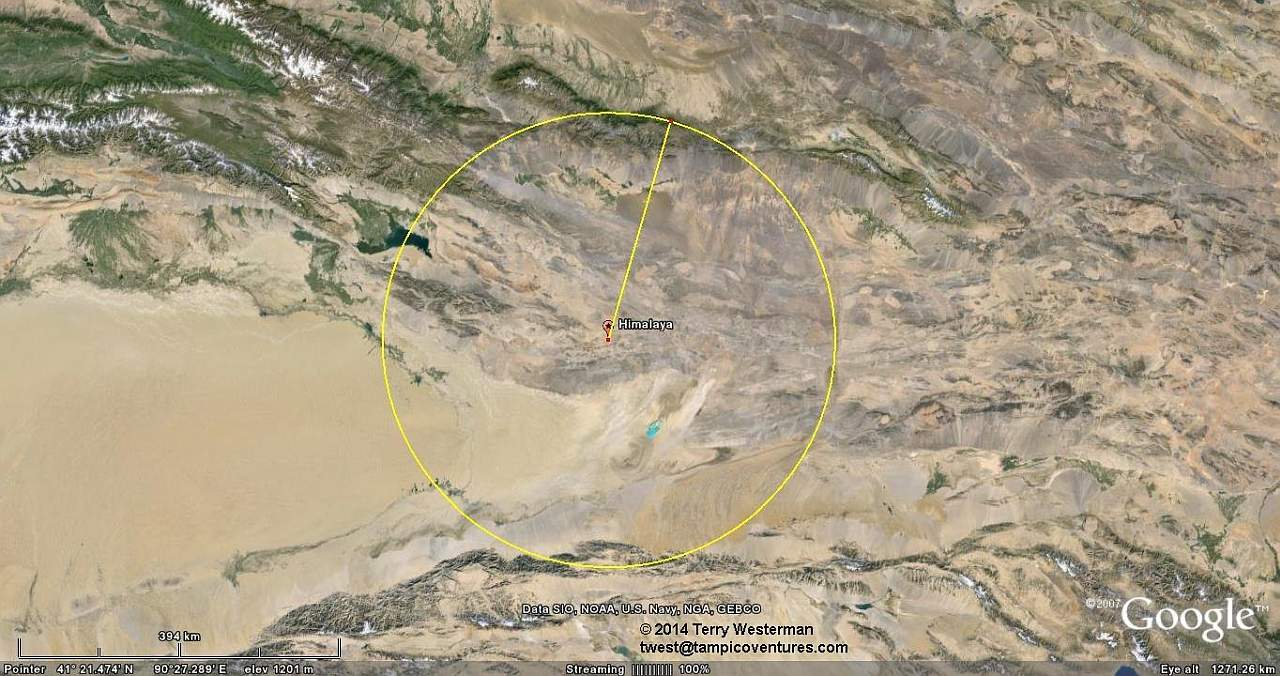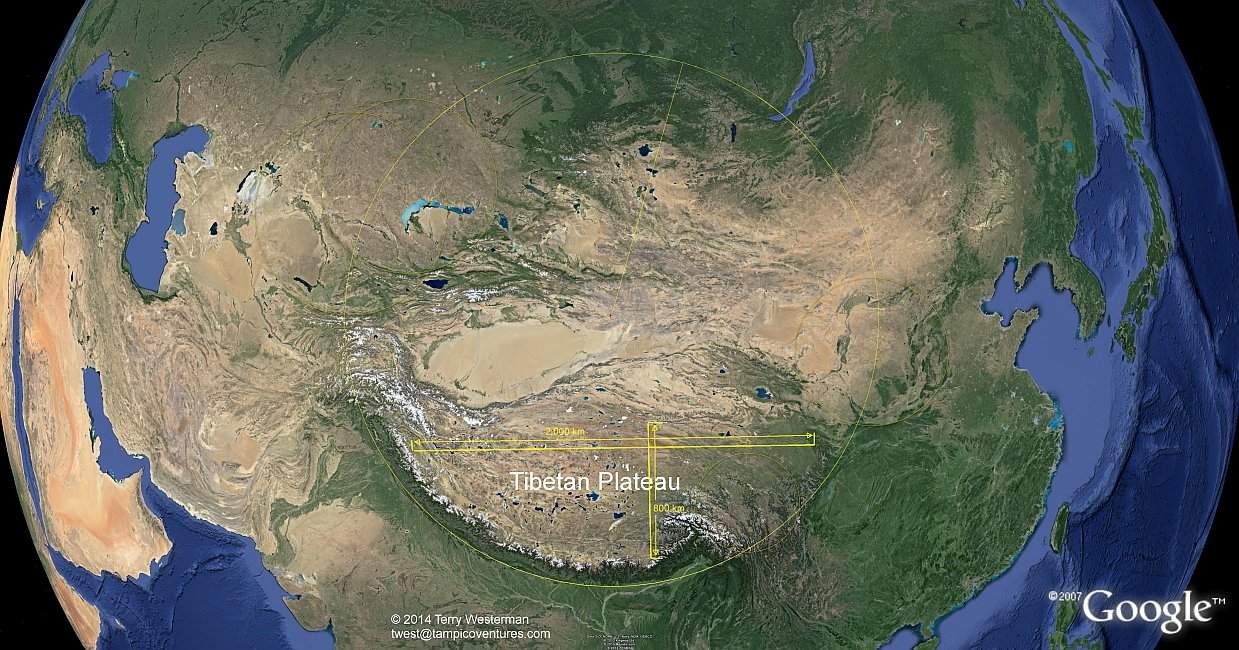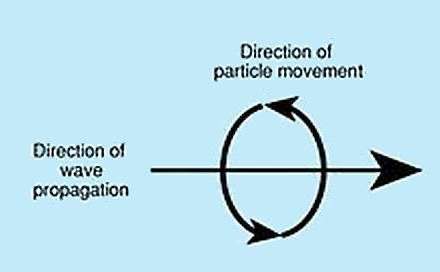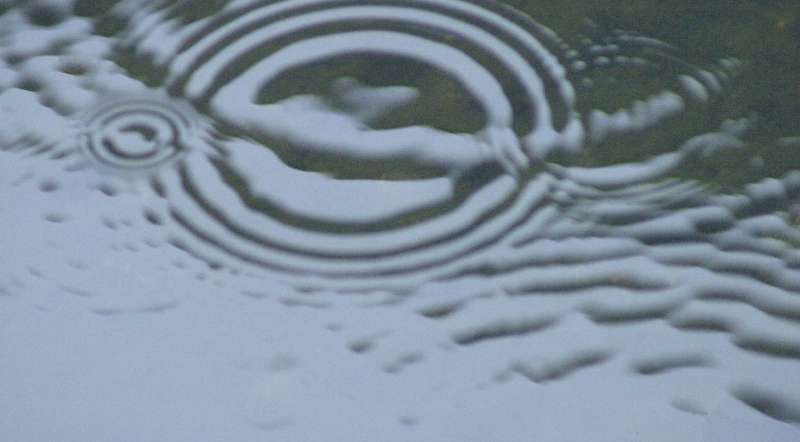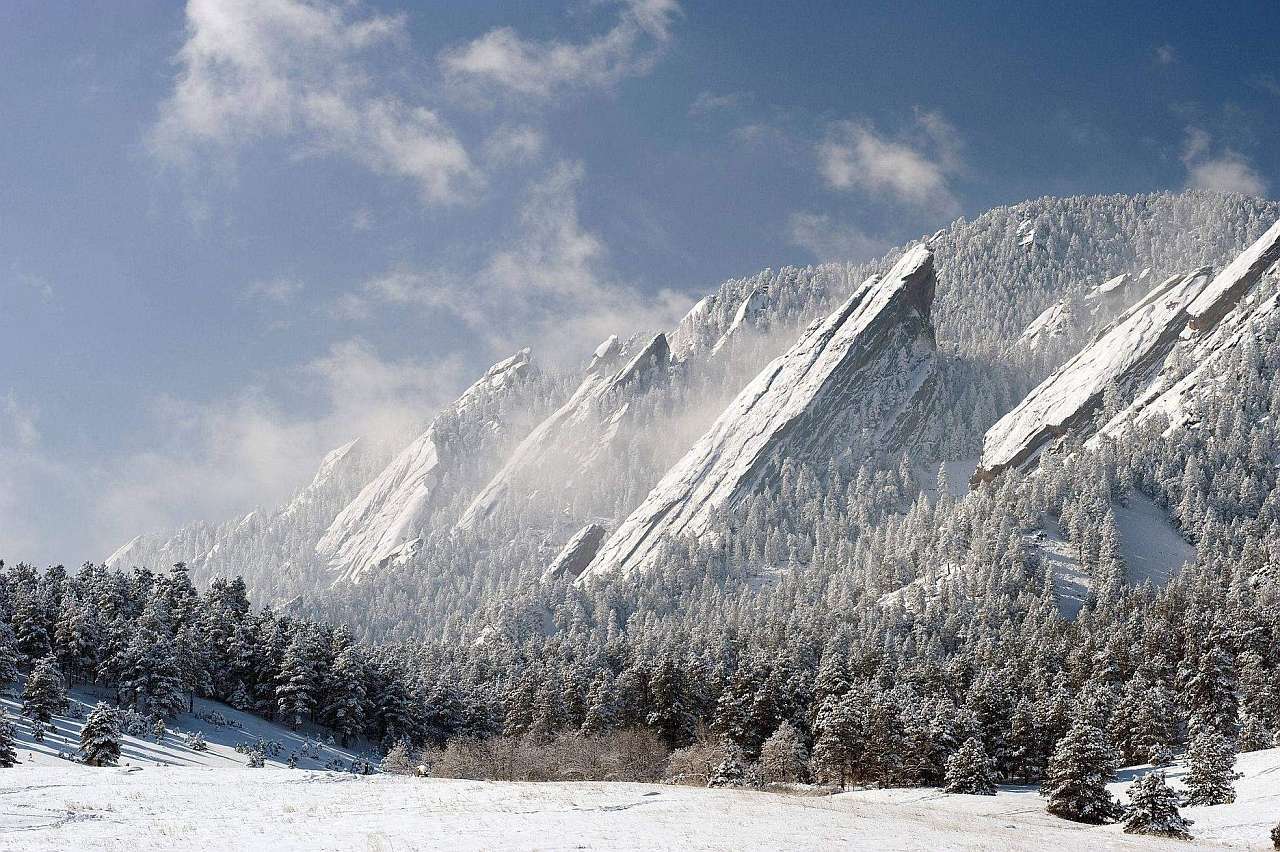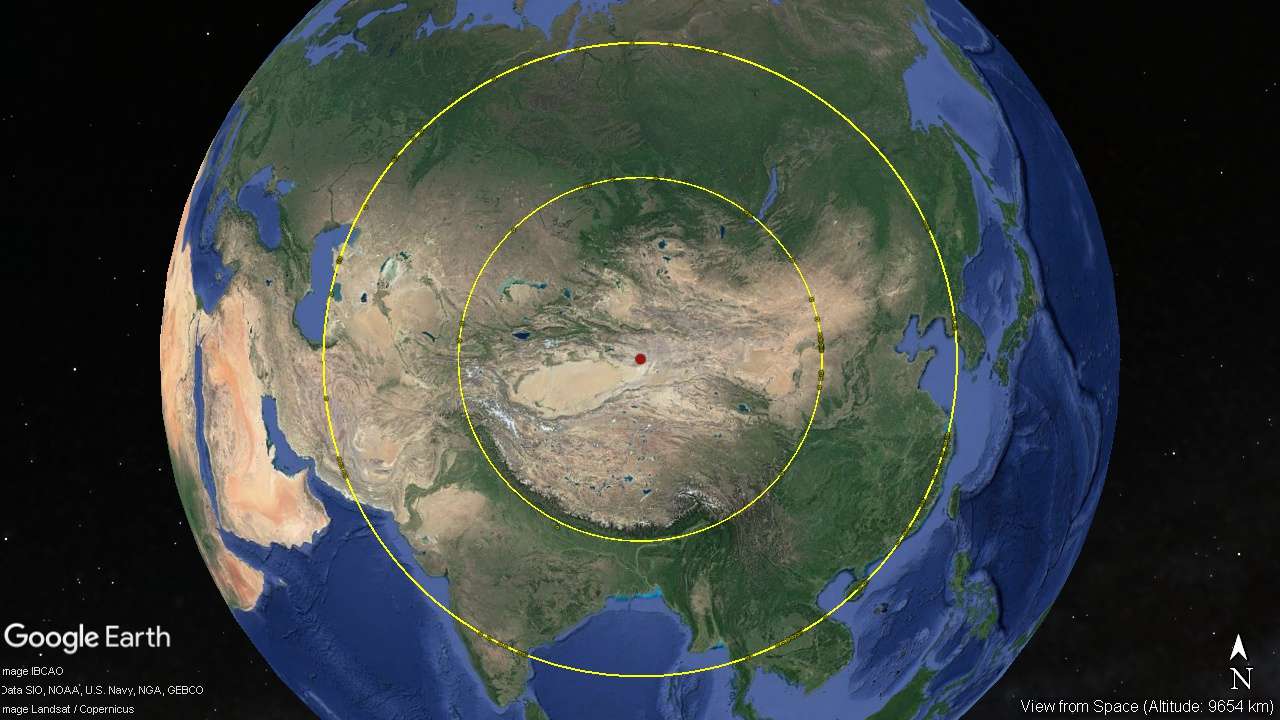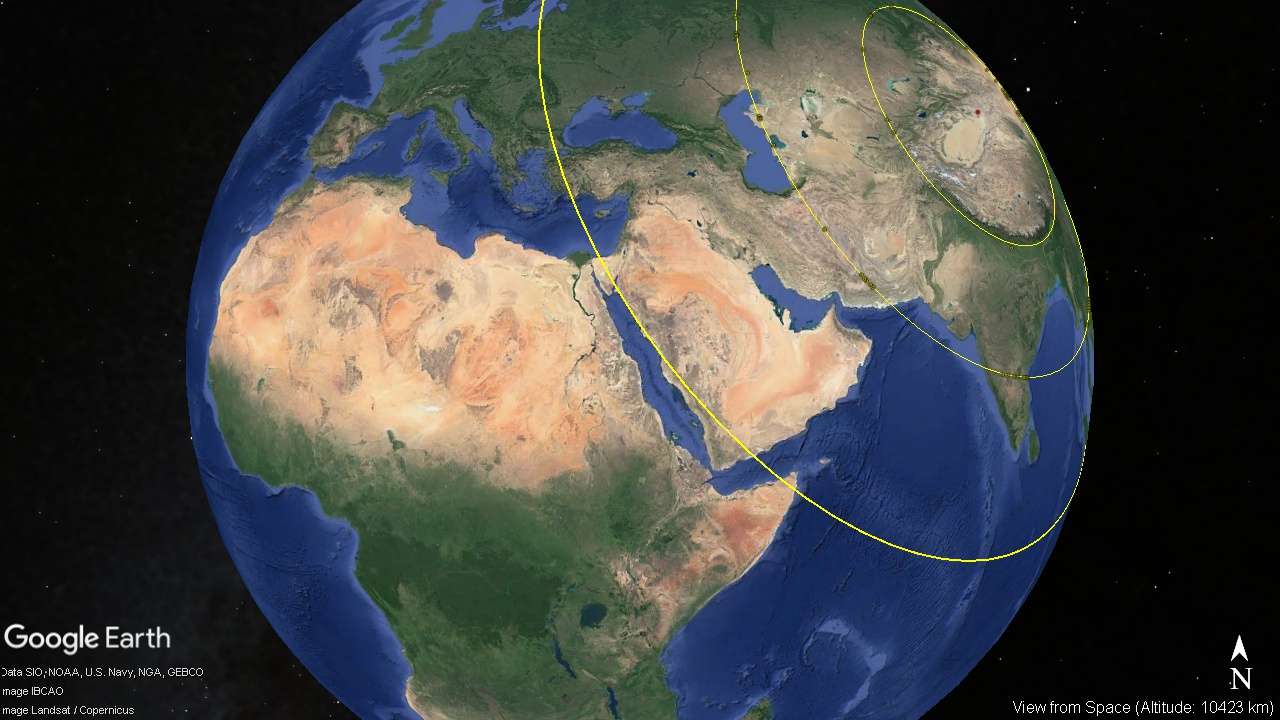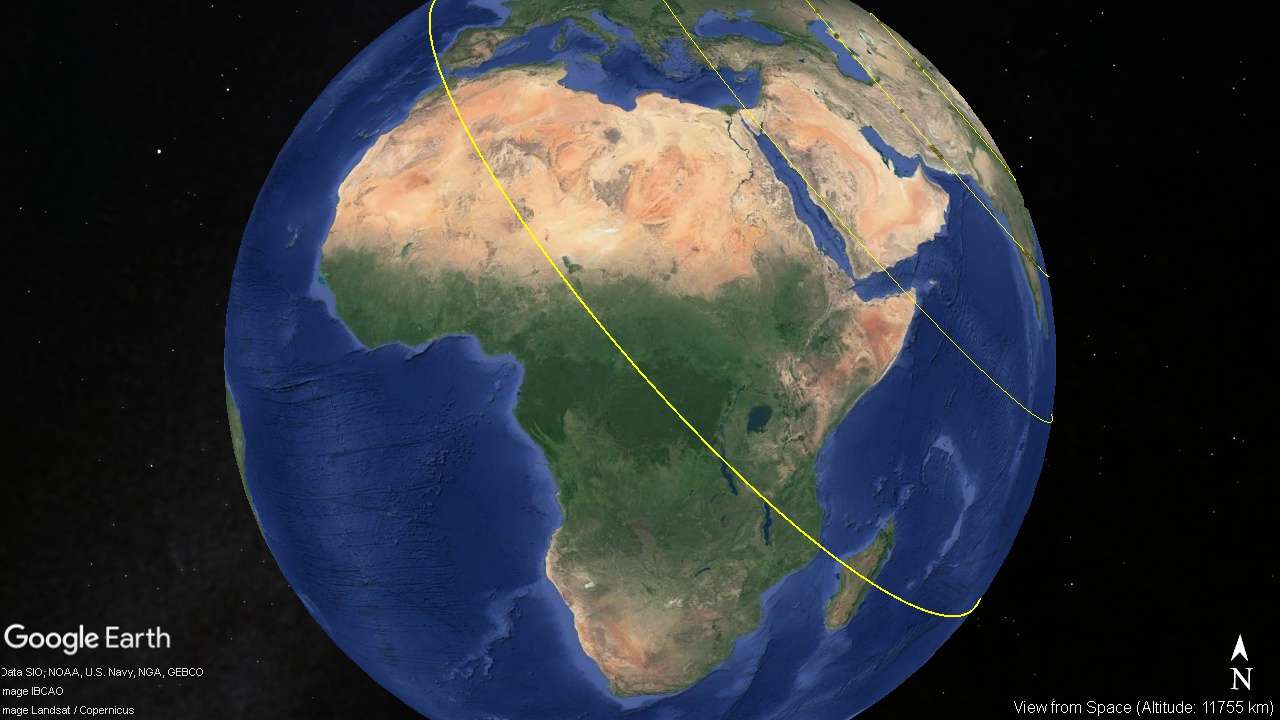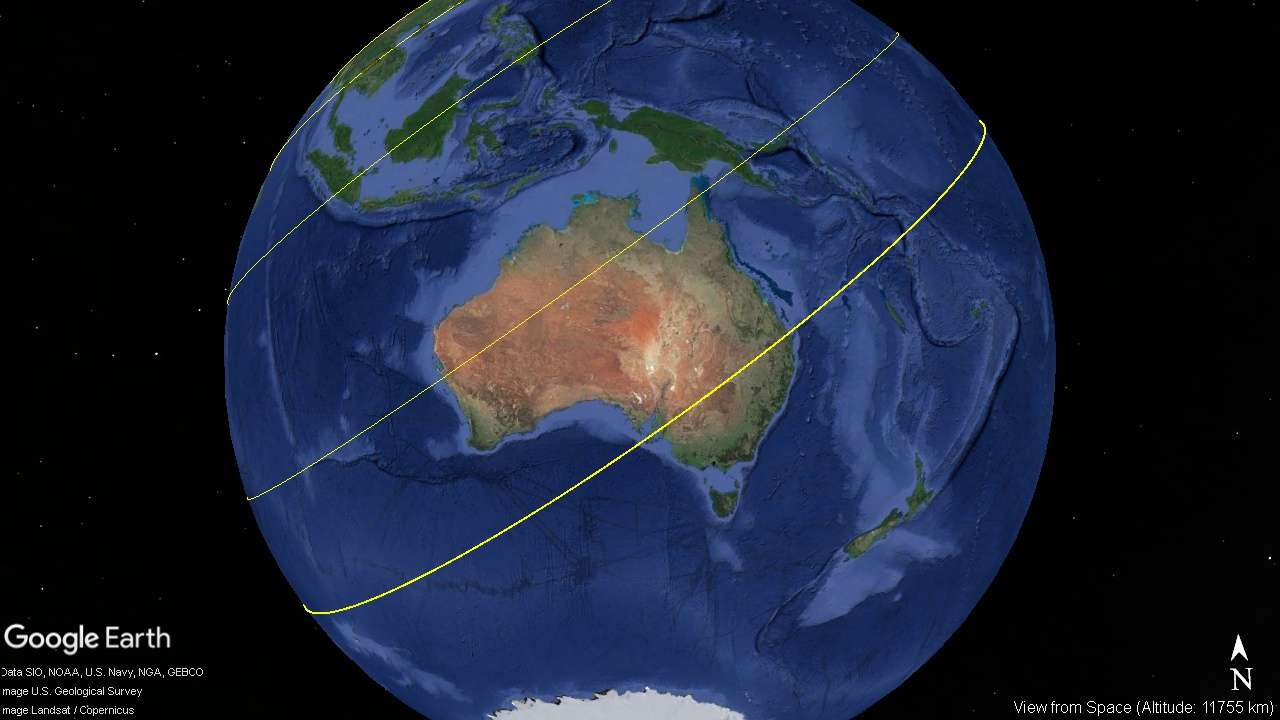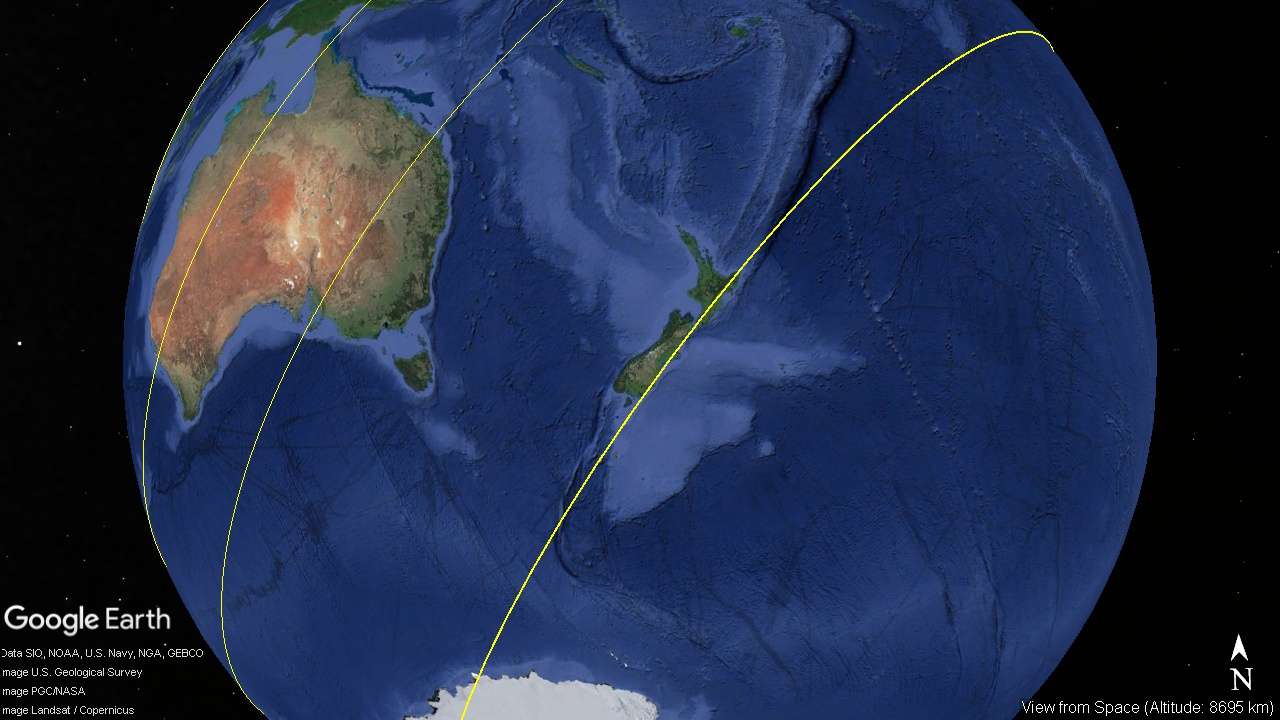If you arrived here by any means other than from the Index of Impacts,
it is suggested that you start at the Introduction to gain an understanding of what follows.
The Himalayan Meteor Impact
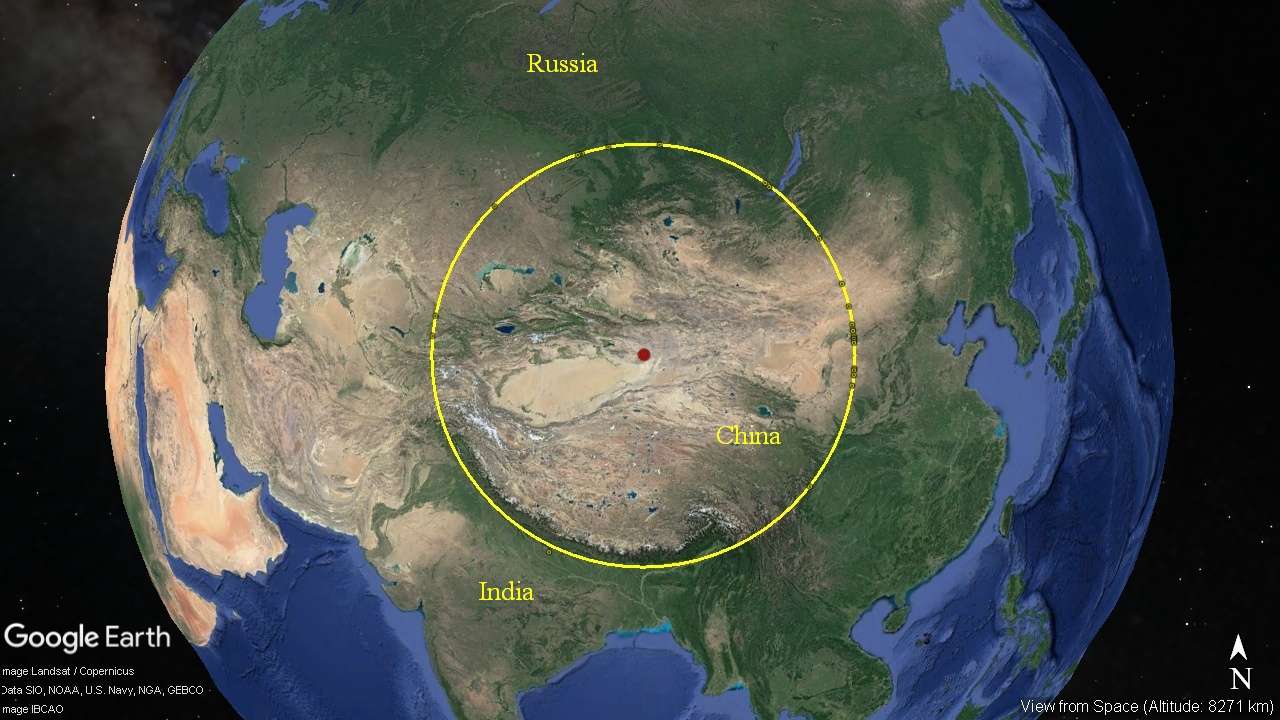
Depending on your browser, the .kmz file will either save to disk. where you can click on it and it will open in Google Earth, or it will open in Google Earth directly. By oppening the .kmz file, you can examine this circle in detail. The file will open in the left hand column under Places, Temporary Places. Click the arrow to the left of the Him1635km.kmz file to expamd the placemarks. Clicking on the placemarks top to bottom will take you on a tour of the major features which mark this circle, and if you wish, you can explore these features in detail, and others you may see along the way.
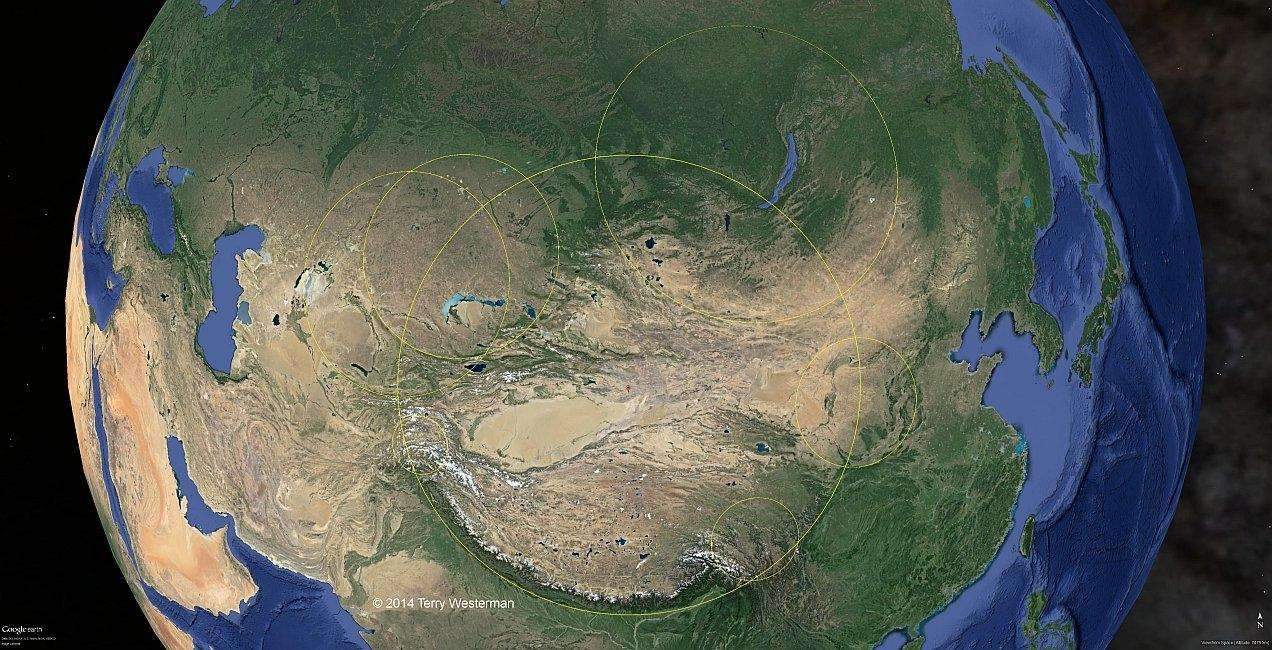
The image above is the Himalayan Impact, 1635 kilometer seismic circle, overlaid with several circles showing the locations of impacts that came after the Himalayan. There are many more. These later impacts, broke the form of the Himalayan Impact in many places. Showing the various impacts this way, the reason for the various forms of the geography in the region start to emerge. This also gives the basis for developing an age scale based on the various impacts. The Himalayan must be very old to have been hit this many times after it struck the Earth. If you study this image, you may find many other arcs, parts of circles. If the proper sized circle were to be fitted into those arcs, other impact sites would show themselves.
Note that the smaller circles appear to be somewhat oval. This is because of the curvature of the Earth being represented in two dimensions. Each of these circles follow geographic land formations that have been photographed using the finest satellite imagery available today.
